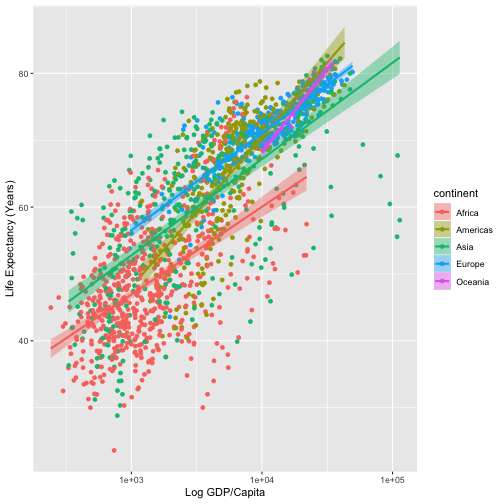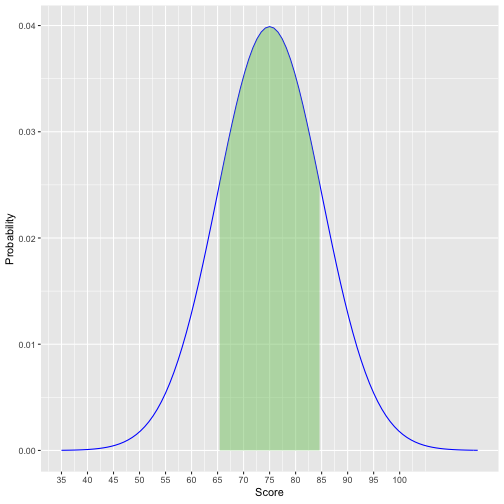Lecture 1: Introduction to Econometrics
ECON 480 - Econometrics - Fall 2018
Ryan Safner
August 27, 2018
What is Econometrics?
Why Everyone, Yes Everyone, Should Learn Statistics

Why Everyone, Yes Everyone, Should Learn Statistics

We're Not so Good at Statistics
- Votes in the U.S. House of Representatives in favor of passing the Civil Rights Act of 1964:
| Democrat | Republican |
|---|---|
| 61% | 80% |
We're Not so Good at Statistics
- Votes in the U.S. House of Representatives in favor of passing the Civil Rights Act of 1964:
| Democrat | Republican |
|---|---|
| 61% | 80% |
- Simple enough: "on average, Republicans tended to vote for passage more than Democrats"
We're Not so Good at Statistics
- Broken down further by Northern vs. Southern states:
| Democrat | Republican | |
|---|---|---|
| North | 94% | 85% |
| (145/154) | (138/162) | |
| South | 7% | 0% |
| (7/94) | (0/10) | |
| Overall | 61% | 80% |
| (152/248) | (138/172) |
- What's going on?
We're Not so Good at Statistics
- Broken down further by Northern vs. Southern states:
| Democrat | Republican | |
|---|---|---|
| North | 94% | 85% |
| (145/154) | (138/162) | |
| South | 7% | 0% |
| (7/94) | (0/10) | |
| Overall | 61% | 80% |
| (152/248) | (138/172) |
What's going on?
A far greater proportion of Democrats (94/248, 38%) than Republicans (10/172, 6%) were from the South
We're Not so Good at Statistics
- Broken down further by Northern vs. Southern states:
| Democrat | Republican | |
|---|---|---|
| North | 94% | 85% |
| (145/154) | (138/162) | |
| South | 7% | 0% |
| (7/94) | (0/10) | |
| Overall | 61% | 80% |
| (152/248) | (138/172) |
What's going on?
A far greater proportion of Democrats (94/248, 38%) than Republicans (10/172, 6%) were from the South
The 7% of southern Democrats voting for the Act dragged down the Democrats' overall percentage more than the 0% of southern Republicans
Simpson's Paradox
Simpson's Paradox: The correlation between two variables can change (even reverse!) when additional variables are considered

Simpson's Paradox
Simpson's Paradox: The correlation between two variables can change (even reverse!) when additional variables are considered

Economic Theory
Economic Theory and Economic Models
- Economic theorizing often involves building a formal model to relate economic phenomena and build intuitions
Economic Theory and Economic Models
- Economic theorizing often involves building a formal model to relate economic phenomena and build intuitions
Example:
Becker (1968) famously models crime as a rational choice: y=f(x1,x2,x3,x4,x5,x6,x7)
| Thing | Thing 2 |
|---|---|
| x1 | Hours spent on criminal activities |
| x2 | Hourly wages for legal employment |
- We can at least predict the "sign" of each relationship between y and each xi (then estimate the quantitative impact)
| Thing | Thing 2 |
|---|---|
| x1 | Hours spent on criminal activities |
| x2 | Hourly wages for legal employment |
Example Code
ggplot(data = gapminder, aes(x = gdpPercap, y = lifeExp, color = continent, fill= continent))+ geom_point()+geom_smooth(method = "lm") + scale_x_log10()+ylab("Life Expectancy (Years)")+ xlab("Log GDP/Capita")
About this Class
This Class Is

This Class Is

Example
| mpg | cyl | disp | hp | drat | wt | qsec | vs | am | gear | carb | |
|---|---|---|---|---|---|---|---|---|---|---|---|
| Mazda RX4 | 21.0 | 6 | 160 | 110 | 3.90 | 2.620 | 16.46 | 0 | 1 | 4 | 4 |
| Mazda RX4 Wag | 21.0 | 6 | 160 | 110 | 3.90 | 2.875 | 17.02 | 0 | 1 | 4 | 4 |
| Datsun 710 | 22.8 | 4 | 108 | 93 | 3.85 | 2.320 | 18.61 | 1 | 1 | 4 | 1 |
| Hornet 4 Drive | 21.4 | 6 | 258 | 110 | 3.08 | 3.215 | 19.44 | 1 | 0 | 3 | 1 |
| Hornet Sportabout | 18.7 | 8 | 360 | 175 | 3.15 | 3.440 | 17.02 | 0 | 0 | 3 | 2 |
| Valiant | 18.1 | 6 | 225 | 105 | 2.76 | 3.460 | 20.22 | 1 | 0 | 3 | 1 |
Example II
## ## Call:## lm(formula = hwy ~ displ, data = mpg)## ## Residuals:## Min 1Q Median 3Q Max ## -7.1039 -2.1646 -0.2242 2.0589 15.0105 ## ## Coefficients:## Estimate Std. Error t value Pr(>|t|) ## (Intercept) 35.6977 0.7204 49.55 <2e-16 ***## displ -3.5306 0.1945 -18.15 <2e-16 ***## ---## Signif. codes: 0 '***' 0.001 '**' 0.01 '*' 0.05 '.' 0.1 ' ' 1## ## Residual standard error: 3.836 on 232 degrees of freedom## Multiple R-squared: 0.5868, Adjusted R-squared: 0.585 ## F-statistic: 329.5 on 1 and 232 DF, p-value: < 2.2e-16
Example III
## ## Call:## lm(formula = hwy ~ displ, data = mpg)## ## Residuals:## Min 1Q Median 3Q Max ## -7.1039 -2.1646 -0.2242 2.0589 15.0105 ## ## Coefficients:## Estimate Std. Error t value Pr(>|t|) ## (Intercept) 35.6977 0.7204 49.55 <2e-16 ***## displ -3.5306 0.1945 -18.15 <2e-16 ***## ---## Signif. codes: 0 '***' 0.001 '**' 0.01 '*' 0.05 '.' 0.1 ' ' 1## ## Residual standard error: 3.836 on 232 degrees of freedom## Multiple R-squared: 0.5868, Adjusted R-squared: 0.585 ## F-statistic: 329.5 on 1 and 232 DF, p-value: < 2.2e-16| Dependent variable: | |
| hwy | |
| displ | -3.531*** |
| (0.195) | |
| Constant | 35.698*** |
| (0.720) | |
| Observations | 234 |
| R2 | 0.587 |
| Adjusted R2 | 0.585 |
| Residual Std. Error | 3.836 (df = 232) |
| F Statistic | 329.453*** (df = 1; 232) |
| Note: | *p<0.1; **p<0.05; ***p<0.01 |
- Probability a student gets between a 65 and 85:
## [1] 0.6826895
DAGs

